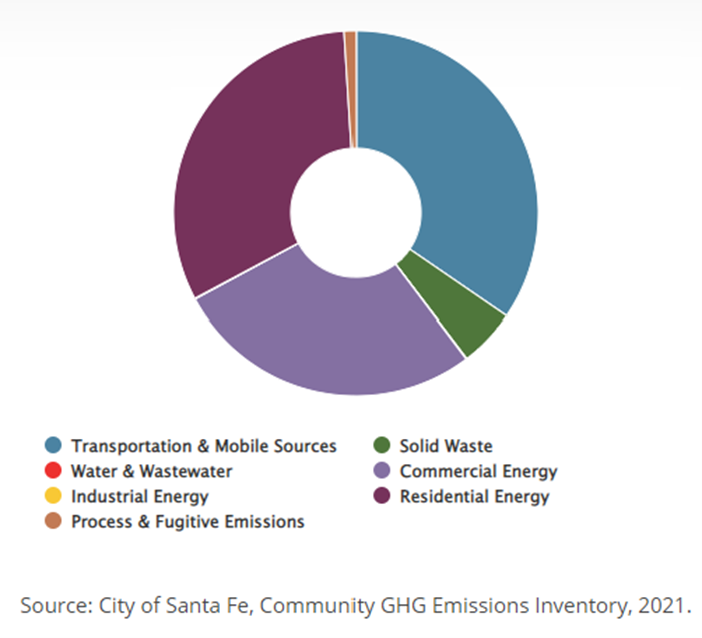How Santa Fe Is Contributing to Climate Change – And What We Can Do About It (Part 2)
(Before you read this post, make sure to check out Part 1 on our blog series on GHG emissions here)
Now that we’ve covered what greenhouse gas emissions are and what an inventory is, let’s discuss the results of the 2021 Community GHG Inventory.
We are thrilled to report that total GHG emissions dropped 15% from 2015! This decrease happened even as Santa Fe accumulated 5,000 new residents. This is a great indicator of the progress we’ve made thus far and furthers momentum for future action.
Transportation marks the largest drop in our community’s emissions with a whopping 33% reduction. As transportation makes up the largest chunk of Santa Fe’s total GHG emissions, this reduction makes a major dent in our overall environmental impact.
Santa Fe is committed to keep reducing the City’s Vehicle Miles Traveled (VMTs) — the total annual miles that the average person travels in a car — by connecting people with vanpools, buses, shuttles, and bike routes through the RideFinders service. The City will also continue to prioritize the usage of electric vehicles (EVs) for sustainable travel. In fact, the City of Santa Fe has just added 17 new EV to our fleet to cut down on emission contributing vehicles.
Residential energy — the electricity that powers your home’s lights or the heat that warms your rooms— is the second largest source of emissions behind transportation. We’re still working on decreasing our emissions in this sector, but the community has continued to limit the growth of emissions from residential use.
To reduce residential emissions, the City is ramping up programs to build more renewable energy production, like solar and wind, with Solarize Santa Fe and the Santa Fe Clean Energy Fund. Additionally, residents can build up their home’s energy efficiency to reduce their emissions and save money on monthly bills with programs like the PNM Home Energy Checkup or using resources like the Energy Saver Guide.
Green building initiatives, which seek to establish sustainable development guidelines for new residential and commercial buildings, are also a top priority to reduce emissions. The city has already adopted a Green Building Code and seeks to keep promoting sustainable development in land use plans and neighborhood plans to cut emissions in our built environment.
Overall, Santa Fe has made great strides in reducing GHG emissions in the past decade. Now, we will continue to build on this progress to reach our goal of carbon neutrality by 2040.
It takes all of us to reduce emissions, so please check out the “How You Can Help” resources on our Sustainability Dashboard to learn more about how you can make a change today.
Previous Post
Water in Santa Fe
Next Post
How Santa Fe Is Contributing to Climate Change – And What We Can Do About It (Part 1)




